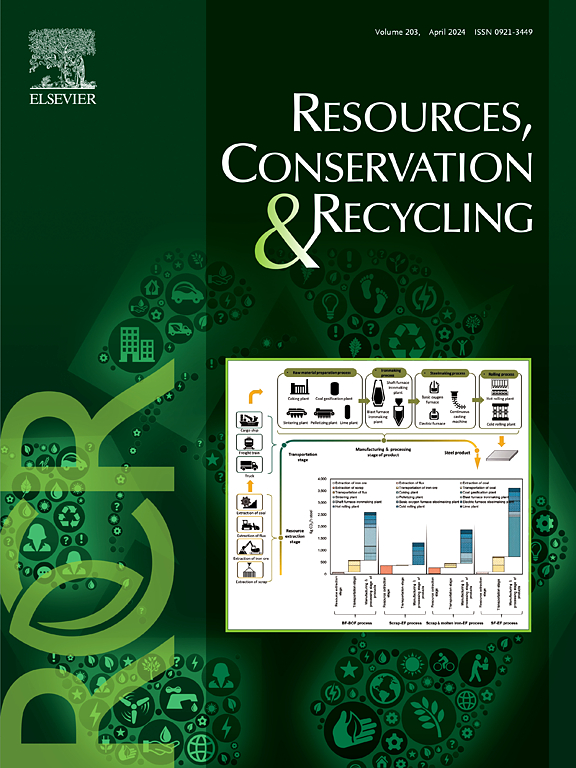Phosphorus flow changes driven by soaring LiFePO4 batteries in electric vehicles and energy storage systems in China: Past and future perspectives
IF 11.2
1区 环境科学与生态学
Q1 ENGINEERING, ENVIRONMENTAL
引用次数: 0
Abstract
The advancement of the lithium-ion battery (LIB) industry poses pressures on resource availability and environmental protection. Our findings indicate that both demand and scrap amount of LIBs in China will continue to grow in the coming decades as LiFePO4 batteries gradually dominate. Secondary utilization (SU) which can alleviate these pressures, however, is projected to face a supply-demand bottleneck in 2039. In 2022, phosphorus demand from the LIB system accounted for 2.7 % of total phosphate ore extraction and is expected to reach 9.0 times that level in 2050 in the high scenario without SU. SU can substantially enhance phosphorus utilization efficiency, reducing projected demand growth to 7.9 times, or 2.5 times in the low-demand scenario. A similar trend in phosphorus losses is observed. To address the ongoing increase in phosphorus demand and loss, recycling of the LiFePO4 precursor, FePO4, should be promoted to support the sustainable development of China’s LIB industry.

中国电动汽车和储能系统中飞速发展的LiFePO4电池驱动的磷流变化:过去和未来的观点
锂离子电池(LIB)产业的发展给资源的可用性和环境保护带来了压力。我们的研究结果表明,随着LiFePO4电池逐渐占据主导地位,未来几十年中国锂离子电池的需求和废品量都将继续增长。然而,可以缓解这些压力的二次利用(SU)预计将在2039年面临供需瓶颈。2022年,LIB系统对磷的需求占磷矿总开采量的2.7%,在没有SU的高情景下,预计到2050年将达到该水平的9.0倍。SU可以大幅提高磷的利用效率,将预计需求增长降至7.9倍,在低需求情景下将降至2.5倍。在磷损失方面也观察到类似的趋势。为了解决持续增加的磷需求和损失,应促进LiFePO4前驱体FePO4的回收利用,以支持中国LIB产业的可持续发展。
本文章由计算机程序翻译,如有差异,请以英文原文为准。
求助全文
约1分钟内获得全文
求助全文
来源期刊

Resources Conservation and Recycling
环境科学-工程:环境
CiteScore
22.90
自引率
6.10%
发文量
625
审稿时长
23 days
期刊介绍:
The journal Resources, Conservation & Recycling welcomes contributions from research, which consider sustainable management and conservation of resources. The journal prioritizes understanding the transformation processes crucial for transitioning toward more sustainable production and consumption systems. It highlights technological, economic, institutional, and policy aspects related to specific resource management practices such as conservation, recycling, and resource substitution, as well as broader strategies like improving resource productivity and restructuring production and consumption patterns.
Contributions may address regional, national, or international scales and can range from individual resources or technologies to entire sectors or systems. Authors are encouraged to explore scientific and methodological issues alongside practical, environmental, and economic implications. However, manuscripts focusing solely on laboratory experiments without discussing their broader implications will not be considered for publication in the journal.
 求助内容:
求助内容: 应助结果提醒方式:
应助结果提醒方式:


